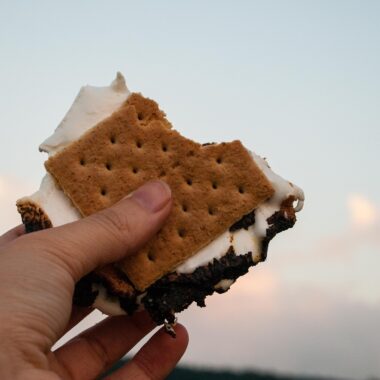Honey has been cherished for millennia—not just for its sweet taste, but also for its remarkable staying power. Archaeologists have uncovered pots of honey in ancient Egyptian tombs, some over 3,000 years old, that were still perfectly edible. This astonishing durability prompts a fascinating question: Does honey ever go bad? And if it lasts so long, how should we store it to ensure it remains good for years—or even decades? In this article, we’ll explore the science behind honey’s near-eternal shelf life, debunk common myths, and provide practical tips for storing honey properly so you can enjoy it for years to come.
The Science of Honey’s Longevity
At first glance, honey might seem like just another food item—an unassuming blend of sugars and water produced by bees from flower nectar. Yet, its composition and properties make it an inhospitable environment for bacteria, yeast, and molds that typically cause food to spoil. To understand why honey doesn’t go bad under normal conditions, let’s break down the key factors that contribute to its longevity.
- Low Water Content
Honey contains very little water—typically around 17-18% by weight in properly harvested honey. Most microorganisms need a higher water content (closer to 50% or more) to thrive. With so little moisture available, bacteria and fungi simply can’t grow or reproduce effectively in honey. This low water activity is one of honey’s primary defenses against spoilage. - High Sugar Concentration
Honey is a supersaturated solution of sugars—primarily glucose and fructose—making up about 80% of its composition. This high sugar content creates an osmotic effect: any microbes that attempt to invade honey are dehydrated as water is drawn out of their cells, rendering them inactive or dead. It’s a natural preservation mechanism that leaves little room for microbial life. - Natural Acidity
Honey has a pH range of about 3.2 to 4.5, making it quite acidic. This acidity is largely due to gluconic acid, a byproduct of bees converting nectar into honey. Most bacteria and pathogens prefer a neutral pH (around 7), so honey’s acidic environment further inhibits their growth. - Hydrogen Peroxide and Other Antimicrobials
When bees process nectar, they add an enzyme called glucose oxidase. This enzyme breaks down glucose in the presence of water, producing hydrogen peroxide—a natural antiseptic. While the levels of hydrogen peroxide in honey are low, they’re enough to deter microbial activity. Some honeys, like manuka honey, also contain additional antimicrobial compounds (e.g., methylglyoxal), enhancing their preservative qualities even further. - Sealed by Nature
In the hive, bees cap honey-filled cells with wax, protecting it from air and contaminants. While commercial honey isn’t stored in wax, proper sealing in jars mimics this natural preservation method, keeping out moisture and microbes.
Thanks to these combined properties, honey is essentially a self-preserving food. Under ideal conditions, it can remain stable and safe to eat indefinitely—without refrigeration, preservatives, or special treatment.
Does Honey Ever Go Bad?
Given its natural defenses, pure honey doesn’t spoil in the traditional sense. However, there are scenarios where its quality can degrade, or it can become less palatable or safe to consume. Here’s what can happen:
- Fermentation
If honey’s water content rises above 20%—due to improper harvesting, dilution, or exposure to humidity—yeast naturally present in honey can begin to ferment the sugars into alcohol and carbon dioxide. This process doesn’t necessarily make honey unsafe, but it alters its flavor, turning it sour or yeasty, and can cause it to bubble or foam. Fermented honey might still be usable for cooking or brewing (like mead), but it’s no longer the sweet treat you’d expect. - Contamination
While honey itself resists spoilage, it can harbor contaminants introduced after harvesting. For example, Clostridium botulinum spores (which cause botulism) can sometimes be present in raw honey. These spores are harmless to healthy adults but pose a risk to infants under one year old, whose digestive systems can’t neutralize them. This is why pediatricians advise against giving honey to babies. For adults, contamination is rarely an issue unless foreign substances (like dirty utensils) introduce active pathogens. - Crystallization
Over time, many types of honey will crystallize, forming a grainy or solid texture. This is a natural process caused by glucose precipitating out of the supersaturated solution, especially in honeys with a higher glucose-to-fructose ratio (like clover or alfalfa honey). Crystallization doesn’t mean honey has gone bad—it’s still perfectly edible—but some people mistake it for spoilage. You can easily reverse it by gently warming the honey, as we’ll discuss later. - Flavor and Color Changes
Exposure to heat, light, or air over many years can cause honey to darken, lose some aroma, or develop off-flavors. While it remains safe to eat, these changes might affect its culinary appeal. This is more about quality degradation than spoilage.
So, to answer the question: Pure, properly stored honey doesn’t go bad in a way that makes it unsafe. However, external factors like moisture, contamination, or neglect can compromise its taste, texture, or appearance over time.
How to Store Honey Properly for Years
Honey’s natural preservatives make it low-maintenance, but a few simple storage practices can ensure it stays in top condition for years—or even a lifetime. Whether you’re stockpiling jars for emergencies or just want to keep your pantry supply fresh, here’s how to store honey effectively.
- Keep It Sealed
Store honey in a tightly sealed container to prevent moisture and air from sneaking in. Most store-bought honey comes in jars with secure lids, which are ideal. If you’re transferring honey to a new container, opt for glass or food-grade plastic with an airtight seal. Avoid leaving jars open for long periods, as this invites humidity and contaminants. - Store at Room Temperature
Honey thrives at room temperature (around 65-75°F or 18-24°C). There’s no need to refrigerate it—in fact, cold temperatures can speed up crystallization. A pantry, cupboard, or kitchen shelf away from heat sources (like stoves or ovens) is perfect. Consistency is key: avoid drastic temperature swings, which can stress the honey’s structure and encourage crystallization. - Avoid Direct Sunlight
Ultraviolet light can break down honey’s enzymes and antioxidants over time, leading to subtle flavor and nutritional losses. Store honey in a dark place or use opaque containers (like amber glass jars) to shield it from sunlight. Clear jars are fine if kept in a cupboard or box. - Minimize Moisture Exposure
Honey is hygroscopic, meaning it absorbs water from the air. In humid climates, this can raise its water content and risk fermentation. Use dry utensils when scooping honey, and avoid storing it near water sources (like sinks). If you live in a very humid area, consider adding a desiccant packet near (but not in) the jar for extra protection. - Choose the Right Container
Glass is the gold standard for honey storage—it’s non-reactive and won’t impart flavors. Plastic works too, but ensure it’s food-grade and BPA-free, as low-quality plastics might degrade over decades. Avoid metal containers, as honey’s acidity can corrode them, potentially leaching metals into the honey. - Handle Crystallized Honey with Care
If your honey crystallizes, don’t toss it—it’s still good! To reliquefy it, place the jar in a warm (not hot) water bath—around 95-110°F (35-43°C)—and stir gently until the crystals dissolve. Avoid microwaving or boiling, as high heat (above 140°F or 60°C) can destroy enzymes, alter flavor, and weaken honey’s natural preservatives. - Label and Date (Optional)
While honey doesn’t expire, labeling jars with the purchase date can help you track how long you’ve had it and rotate your stock if you’re a honey hoarder. Commercial honey often carries a “best by” date (usually two years from bottling), but this is more about quality than safety—honey far outlasts these labels.
Common Myths About Honey Storage
With honey’s unique properties come some misconceptions. Let’s clear up a few:
- Myth: Honey Must Be Refrigerated
False. Refrigeration isn’t necessary and can hasten crystallization. Room temperature is best. - Myth: Crystallized Honey Is Spoiled
Not true. Crystallization is natural and reversible—proof of honey’s purity, not spoilage. - Myth: Honey Expires
Nope. As long as it’s pure and stored well, honey doesn’t have an expiration date in the conventional sense. - Myth: All Honey Lasts Forever
Mostly true, but adulterated or improperly stored honey (e.g., diluted with water or syrup) can ferment or degrade. Stick to pure, unprocessed honey for maximum shelf life.
Special Cases: Raw vs. Processed Honey
Does the type of honey affect its longevity? Raw honey—unfiltered and unpasteurized—retains more natural enzymes, pollen, and antimicrobials, potentially giving it an edge in preservation. Processed honey, which is heated and filtered, may lose some of these compounds but still benefits from low water content and high sugar levels, keeping it stable for years. Both can last indefinitely if stored properly, though raw honey’s extra bioactive components might make it slightly more resistant to quality changes over centuries.
Practical Uses for Old Honey
Found a dusty jar of honey in the back of your pantry? As long as it’s pure and free of contamination, it’s still good to use. Here are some ideas:
- Cooking and Baking: Older honey might lack peak flavor but works fine in recipes.
- Fermentation: Slightly fermented honey can kickstart homemade mead.
- Medicinal Uses: Honey’s antimicrobial properties make it a traditional remedy for sore throats or minor wounds (though consult a doctor for serious issues).
- Preserving: Use it to coat fruits or nuts for a natural preservation boost.
Conclusion: Honey’s Timeless Appeal
Honey doesn’t go bad in the way most foods do—it’s a marvel of nature’s engineering, designed to withstand the test of time. Its low water content, high sugar concentration, acidity, and antimicrobial compounds create a fortress against spoilage, allowing it to remain edible for years, decades, or even millennia under the right conditions. By storing it in a sealed container at room temperature, away from light and moisture, you can ensure your honey stays as good as the day you bought it—whether that’s for a few months or a few generations.
So, the next time you dip into a jar of honey, take a moment to appreciate its resilience. It’s not just a sweetener—it’s a testament to the ingenuity of bees and a pantry staple that defies the rules of expiration. With proper care, your honey can outlast you, ready to sweeten the lives of those who come after.


















